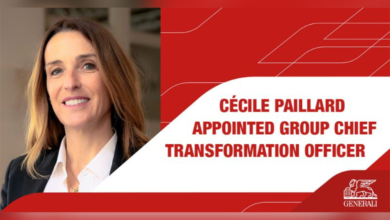Breaking free: Why companies are abandoning traditional health plans for self-funding solutions

Breaking free: Why companies are abandoning traditional health plans for self-funding solutions
Life and health
Written by Nicole Pantelokos
This article was created in partnership with Verikai.
The importance of health insurance cannot be overstated, as it is a critical component of employees’ well-being and financial security. For decades, fully insured health plans have been the standard choice for many employers, offering a predictable model.
However, the landscape is changing. A growing number of companies are turning to self-funded health plans, seeking greater transparency, control, and cost savings.
This trend, driven by advances in data analytics and artificial intelligence (AI), is reshaping the way companies approach health insurance.
James Hughes (pictured), Senior Sales Executive at Verikai, sat down with Insurance Business to share insights into why this migration is happening along with the benefits of switching to self-funding solutions.
Limitations on fully insured plans
Fully insured plans have long been the go-to choice for employers, especially those with smaller groups of employees.
Under this model, employers pay a fixed premium to the insurance company that administers the claims. According to Hughes, there are major drawbacks to this approach.
“The fully secured model does not provide its customers with any useful information,” he said.
“Employers do not have access to their claims data, such as high-cost medical claims or prescription costs. They are simply handed a renewal each year, often with an increased cost, with no and/or little justification.”
This lack of transparency and oversight has frustrated many employers, as they are unable to make informed decisions about their health plans or understand the factors that lead to increased costs.
Benefits of self-financing plans
Partially or fully self-funded plans, where employers bear the financial risk of their employees’ medical/RX claims rather than purchasing traditional “off-the-shelf” insurance, are growing in popularity, according to Hughes.
A recent study published in the journal Health Affairs revealed that in 80% of U.S. counties, the majority of health plan enrollees are in self-funded plans. Furthermore, the number of self-funded employers has increased from 55% of the market in 2015 to 60% of the market in 2021.
This shift is due in large part to the enhanced visibility and control these plans provide over health care costs.
“When an employer moves from a fully insured arrangement to a self-funded program, it gains the ability to better contain costs and change the benefits programs offered to its employees,” Hughes said.
“This includes adjustments to catastrophic medical coverage, RX formulas, and other plan elements. The employer gets access to their claims experience, allowing them to make informed decisions about what is best for their employees.”
This flexibility arises from the fact that self-funded plans are not constrained by state registration requirements, Hughes said.
“Carriers that offer fully insured programs are required to submit benefit plan designs to the states in which they do business. Once submitted, deviations are not permitted. Under a fully insured (guaranteed cost) contract, the best-case scenario for the employer is to wait for an expensive state resubmission By the carrier at some point in the future.”
“For example, if a fully insured employer wants to change the RX formulas to exclude GLP-1 drugs, their hands are tied until they re-file, whereas that is an option for self-funded buyers,” Hughes explained.
Self-financing plans also provide employers the opportunity to actively participate in health loss ratios.
In the event of a favorable loss ratio, employer groups would receive either a portion or all of their gross surplus, a contract function not possible under fully insured plans, Hughes said.
The role of data and artificial intelligence
The move to self-funded plans has been greatly aided by advances in data analytics and artificial intelligence.
Companies like Verikai are at the forefront of this movement, providing employers with the tools they need to effectively analyze and manage their healthcare data.
“We are working to simplify access to data, enabling decision makers to confidently shift away from a fully secured market,” Hughes said.
“Verikai uses artificial intelligence and machine learning to provide comprehensive analysis of past and current claims, and predict risks over the following year.”
The platform uses basic census information, such as name/age/gender/geographic location, in order to generate risk scores for the target population.
When possible, Verikai also requests street address information, making the company unique in its own space.
“Although street addresses are not required, they allow for improved SDoH (social determinants of health) data to be collected, thereby increasing the ‘match rate’ for any given demographic. This outcome allows employers to anticipate future risks and make informed decisions,” Hughes said.
Verikai’s streamlined approach enables employers to quickly qualify risks, enabling them to confidently transition to self-funded plans.
“We empower every group we work with to achieve clarity on three core goals: risk selection, risk avoidance, and risk mitigation,” Hughes said.
Related stories






Fetching comments…